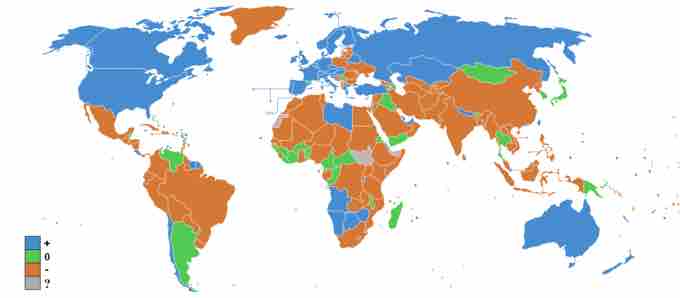Immigration
Immigration is defined as the movement of people from their home country or region to another country, of which they are not native, to live. There are specific economic factors that contribute to immigration, including the desire to obtain higher wage rates, improve the standard of living, have better job opportunities, and gain an education. Non-economic factors are also significant and include leaving a home country due to persecution, ethnic cleansing, genocide, war, natural disasters, and political control (for example, dictatorship). Throughout history, with improved transportation and technology, immigration has become increasingly common worldwide. Immigration numbers impact both the home country and the host country.
Immigration Statistics
In 2005, the United Nations reported that there were nearly 191 million international immigrants worldwide, which accounted for about 3% of the world population . This represented an increase in the number of immigrants by about 26 million since 1990. It is estimated that 60% of the immigrants moved to developed countries.

Country Immigrant Populations in 2005
The darker the color, the higher the percent immigrants in the population. The darkest blue indicates more than 50% of the population are immigrants. There is no data for countries in grey.
In 2006, the International Organization for Migration estimated the number of immigrants to be more than 200 million globally. Europe, the United States, and Asia were found to host the largest number of immigrants at 70 million, 45 million, and 25 million.
Moreover, it is predicted that immigration rates will continue to increase over time . A 2012 survey that was conducted by Gallup determined that nearly 640 million adults would want to immigrate if they had the chance. About one quarter of those surveyed (23%, or 150 million adults) stated that they would choose to immigrate to the United States. Seven percent (45 million adults) stated that they would choose to immigrate to the United Kingdom. Other top countries listed in the survey included Canada, France, Saudi Arabia, Australia, Germany, and Spain.

Net Immigration Rate
This graph shows the worldwide net immigration rate in 2011. The blue shows positive rates, the orange is negative, green is stable, and gray represents no data available. It is predicted that global immigration rates will continue to increase in the future.
Regional Factors for Immigration
Regional factors contribute to immigrants' selection of a specific host country. The prospects for employment, wage rate, standard of living, and immigration laws all contribute to relocation decisions. Examples of immigration patterns in certain countries help to illustrate how specific factors influence immigration numbers worldwide.
- Europe: Immigrants helped to rebuild and repopulate Europe after World War II. In 2005 Europe experienced an overall net gain of 1.8 million people from immigration. This accounted for almost 85% of Europe's total population growth that year. In 2010, according to Eurostat, there were 47.3 million immigrants living throughout Europe, which accounted for 9.4% of the total population; Germany, France, the United Kingdom, Spain, Italy, and the Netherlands experienced the highest immigration rates.
- Japan: Japan had strict immigration policies, but in the early 1990's, issues such as low birth rates and an aging work force caused the country to reevaluate its laws. It is estimated that the number of foreign residents living in Japan in 2008 was more than 2.2 million. The largest groups of immigrants were from Korea, China, and Brazil.
- Mexico: Mexico does experience large numbers of immigrants crossing over the Guatemalan border, but many of these individuals enter illegally and get deported. There were an estimated 200,000 undocumented immigrants in Mexico in 2005 alone. Mexico is also the leading country for migrants moving to the United States. The tighter immigration laws have made immigrating to the U.S. from Mexico very challenging. Many Mexican immigrants enter and live in the U.S. illegally.
- United States: Factors that influence immigration to the U.S. include family reunification, employment opportunities, and humanitarian needs. When President Bill Clinton was in office, the U.S. Commission on Immigration Reform sought to limit legal immigration to about 550,000 people a year. Immigration has remained a heavily debated issue since then. U.S. borders have tightened in recent years to help control illegal immigration. It was documented in 2010 that 1 million immigrants obtained legal permanent resident status for that year.